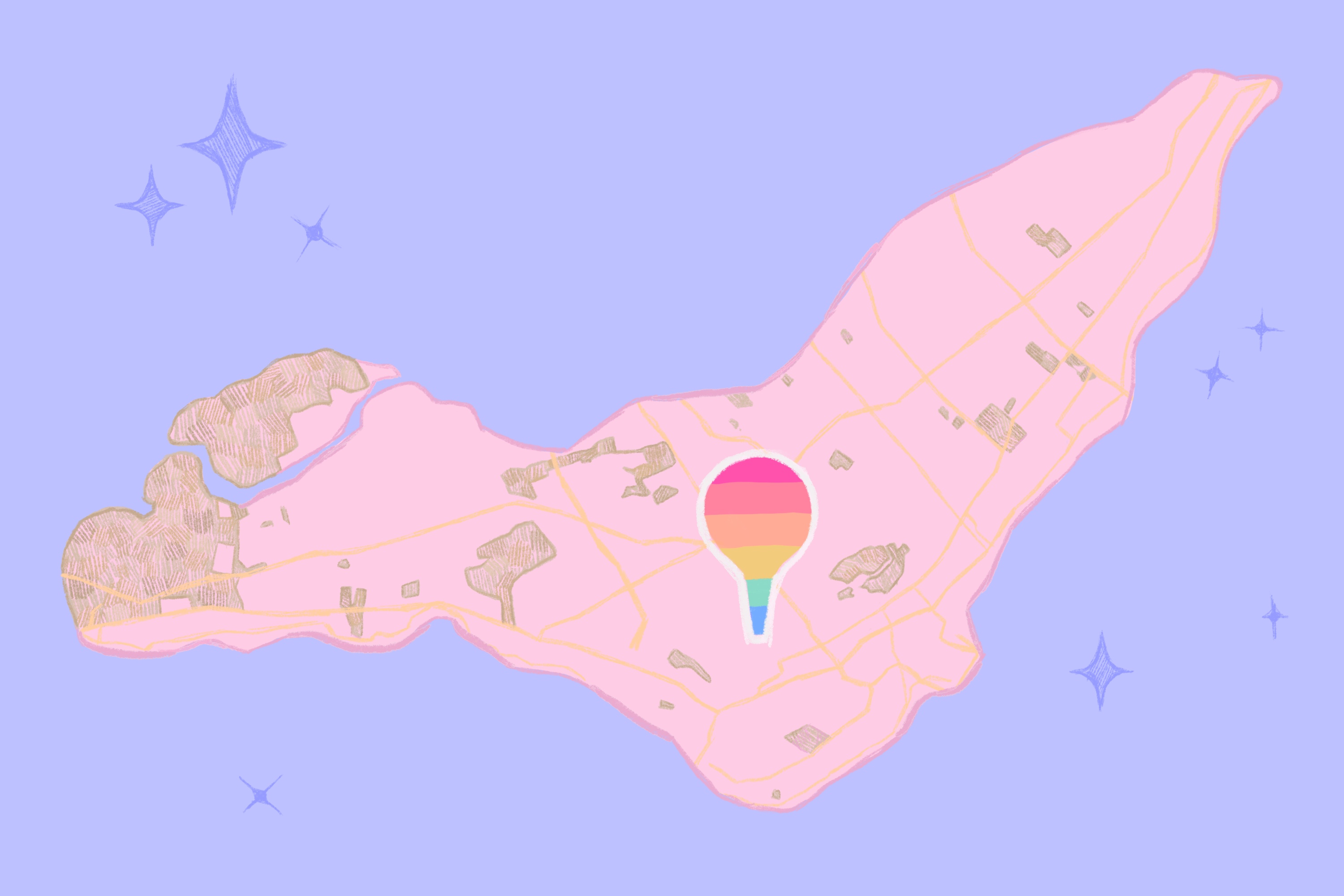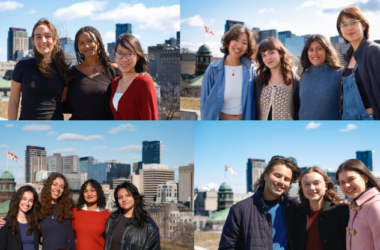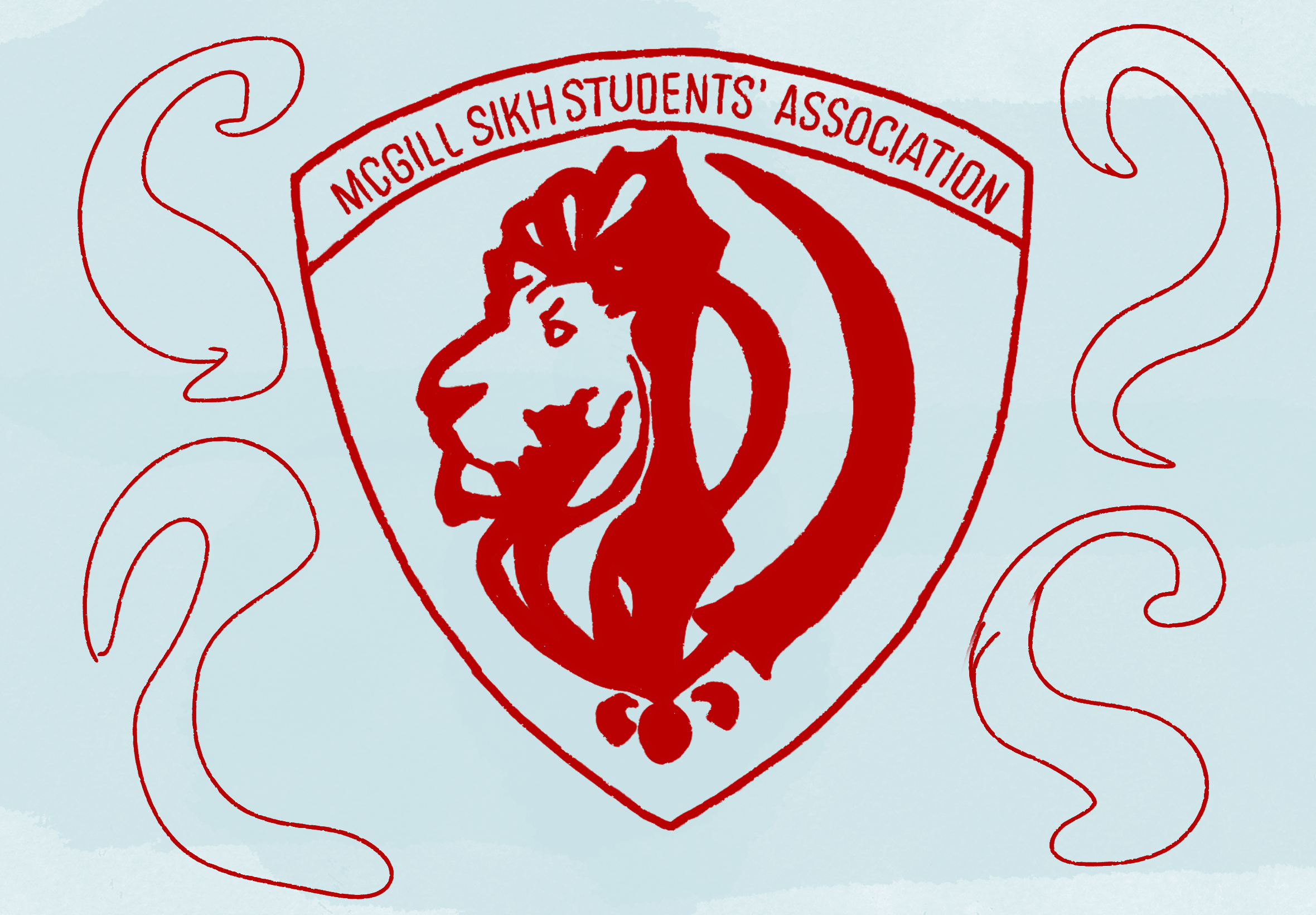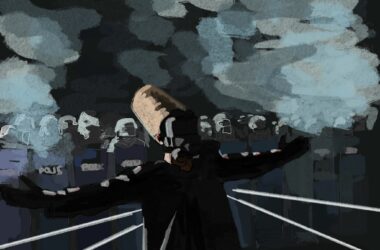Created by multidisciplinary designer Lucas LaRochelle in 2017, Queering the Map (QtM) is a community-based mapping project that allows users to plot their queer experiences over a digital map. QtM seeks to redefine the boundaries of queer spaces: Its millennial pink design portrays a world where queer collectivity forms itself through the sharing of diverse queer realities. Although the initiative launched in Montreal, QtM has expanded to host over 128,000 stories of 2SLGBTQIA+ existence internationally.
LaRochelle was inspired by the site of one their own formative queer experiences—a crooked tree in Parc Jeanne-Mance—to start QtM. While a tree is not a typical “queer space,” it nevertheless became marked with personal queer significance for LaRochelle.
While more universal queer spaces like Montreal’s Gay Village are crucial sites of refuge for the 2SLGBTQIA+ community, QtM recognizes their limited ability to encompass the diversity of sites that queerness manifest. According to LaRochelle, one of the project’s goals is to expand the boundaries of queer experience.
In a Simone de Beauvoir Institute event on digital queer space on March 10, LaRochelle discussed QtM’s story and objectives.
“Queering the Map aims to move away from thinking queer space as fixed and towards an approach to queer place-making that is rooted in action [and] as something that is responsive and in flux,” LaRocehelle said. “A queer approach to space understands that we cannot be queer in any fixed sense, but rather that we are doing queer through acts of resistance.”
Unearthing sites of queer history and feeling, QtM broadens the territories in which the 2SLGBTQIA+ community find kinship and express themselves. LaRochelle explained how the map combats the transient nature of queer experiences by preserving them on a public map.
“A fleeting glance of queer recognition, a T-shot in a library bathroom, an MSN conversation with an anonymous online lover, […] these moments are themselves places of refuge,” LaRochelle said. “They become sites that, through the act of archiving and circulating through the public space of Queering the Map, might be inhabited and reanimated by others who come into contact with them.”
However, QtM’s establishment as a safe space for queer expression is an important component of the site. In 2018, a pro-Donald Trump bot deployed malicious messages throughout the site; a community of volunteer coders worked quickly to edit the site in a GitHub repository.
In response to the attack, LaRochelle established a moderation system to ensure that each QtM submission is checked by volunteer readers for spam, hate speech, or breaches of anonymity.
Preserving anonymity is integral to the site’s status as a space inclusive of diverse queer experiences. LaRochelle explained how the website’s anonymity allows for freer expression: Those who have not come out as queer can contribute, as latent hopes and desires can emerge.
“By rendering all users as anonymous informants, legitimacy becomes a flexible and free-floating term, holding space for the space of fantasies and fabulations that also populate the map, orienting us away from what is and towards what could be,” LaRochelle said.
QtM’s rejection of fixity extends to its user experience. With no search bar or algorithmic method of organization, users can traverse the map and encounter queer voices by chance. In the digital realm of QtM, LaRochelle explained, queer individuals are given the privilege of being lost among the crowd, rather than targeted or singled out.
“In following the path taken by those who have refused to follow the directions, I get lost and feel found in collectivity,” LaRochelle said.








